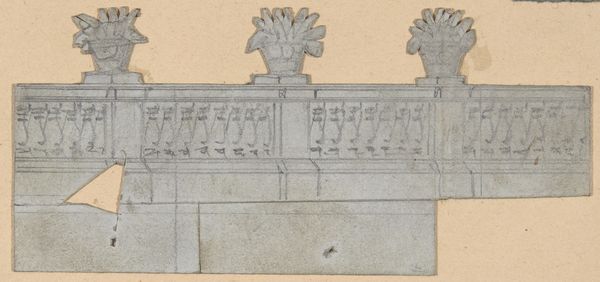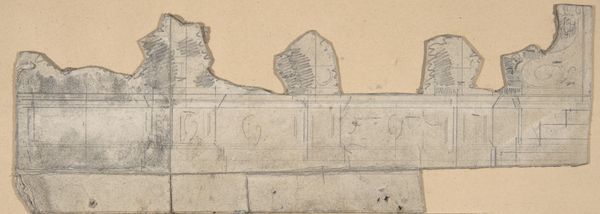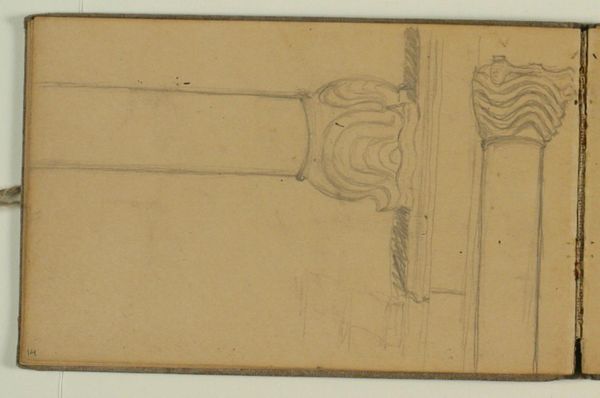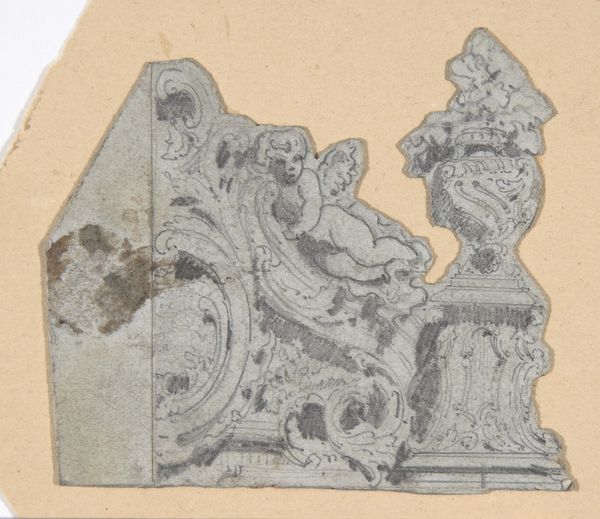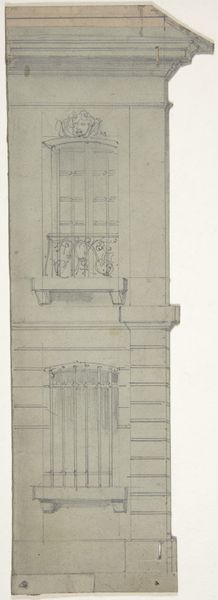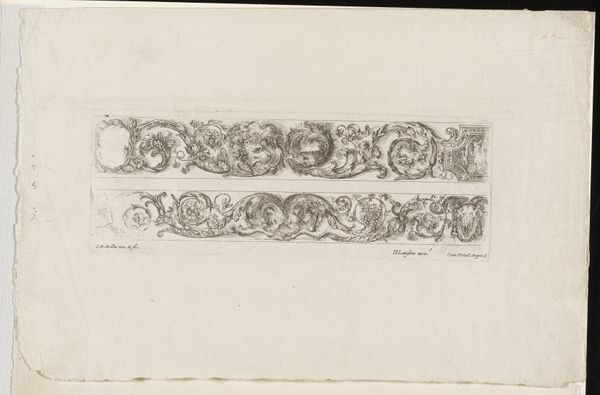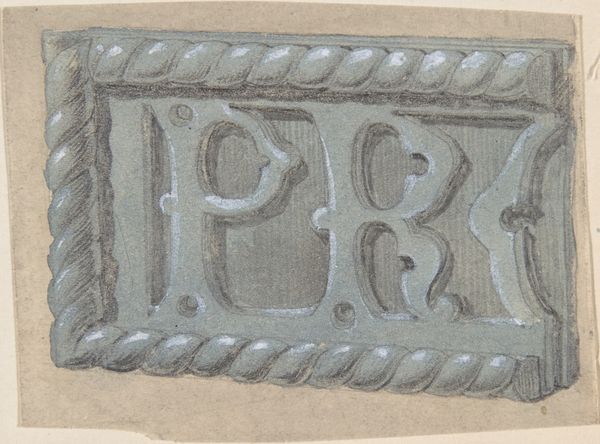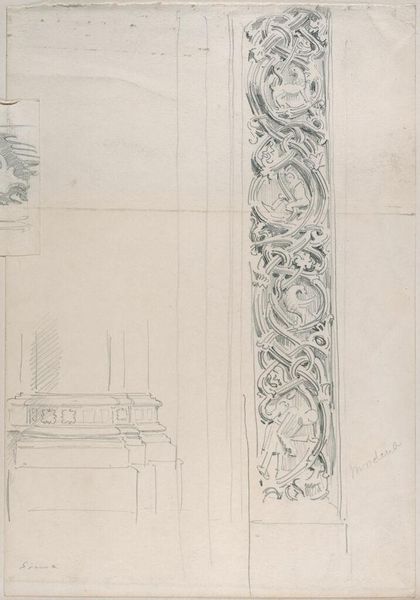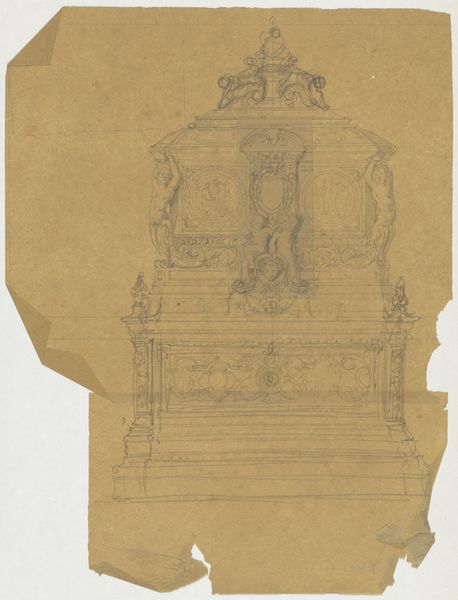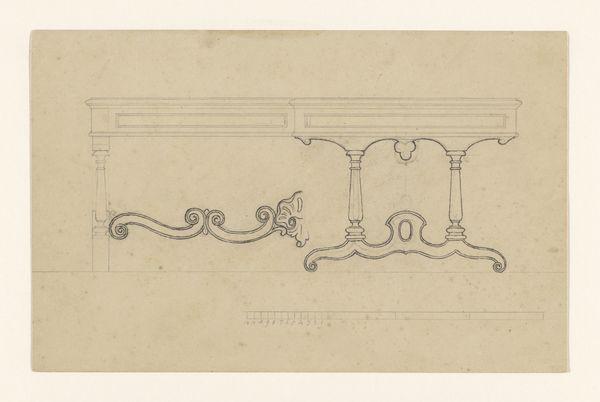
Design for a Stage Set at the Opéra, Paris: Balustrade 1830 - 1890
0:00
0:00
drawing, print, pencil, architecture
#
drawing
# print
#
pencil
#
line
#
cityscape
#
architecture
Dimensions: Irregular sheet: 1 5/8 x 7 13/16 in. (4.2 x 19.9 cm)
Copyright: Public Domain
This design for a stage set was made by Eugène Cicéri, most likely in the mid-19th century, using graphite on paper. Although it’s just a drawing, the subject matter is all about three-dimensional construction. A balustrade like this would typically be made from carved stone or plaster, with highly skilled labor involved at every stage. Cicéri was head of one of the most prolific stage design workshops in Paris, and his studio would have employed many artisans to execute his visions. You can almost feel the weight and density of the imagined architecture, the cool smoothness of the stone, and the repetitive labour involved in producing such a design at scale. The drawing itself captures the quality of his vision, which would then be translated by others into physical reality for the spectacle of the opera. This design reminds us that even the most seemingly ephemeral art forms rely on a network of makers and materials. It challenges us to look beyond the surface and consider the social and economic context in which art is created.
Comments
No comments
Be the first to comment and join the conversation on the ultimate creative platform.
